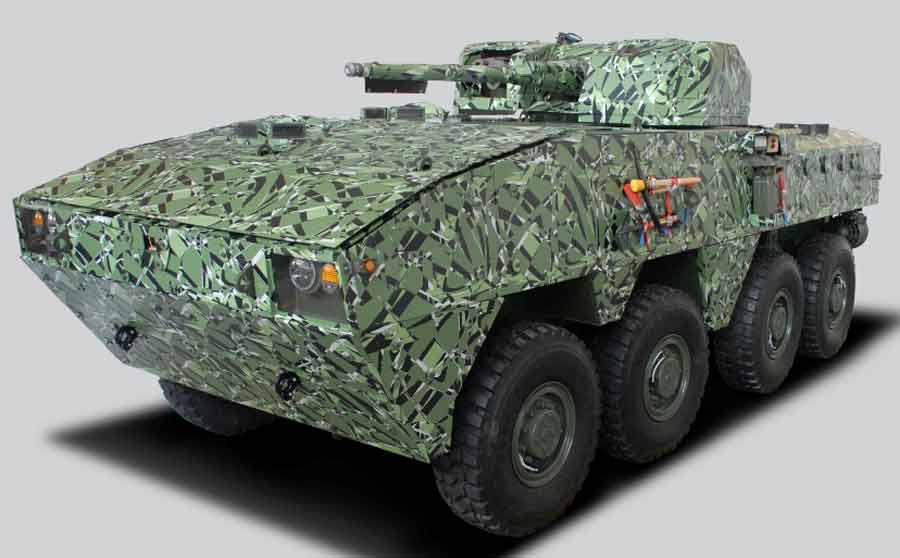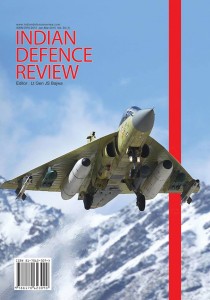Initially, the tank came into use when lines of defence became impassable. The main aim of the tank was to break through defensive barriers that were often heavily fortified; all other uses of the vehicle were sprung from circumstance. Tanks are most effective for breaking through barriers in places where there are structures to be breached, meaning fortified constructions and boundaries to plateau-like spaces that are easy for tanks to access. Unfortunately, tanks more often than not come to painful ends. This occurs particularly when they are used in cities or purely for defence; the use of tanks in mountainous terrain is also quite rare. The future of the tank however, was seriously put to question only when the efficiency of military aircraft in air-sea and aerial combat became clear, followed by an unprecedented rise in its use.
Development in aerial combat has been swift and its effect on land forces profound, particularly when it comes to Armoured Fighting Vehicles (AFV)…
Over time the role of military aircraft in modern warfare has steadily increased. Moreover, the technology of aerial combat has fundamentally changed the ways in which wars are conducted. Development in aerial combat has been swift and its effect on land forces profound, particularly when it comes to Armoured Fighting Vehicles (AFV). The money allocated by the United States (US) government in 2011 for the enhancement of major tanks was reduced by half when compared with the previous year. In 2012, that amount was cut once again. That trend will probably continue until 2017, meaning that improvements to Armoured Fighting Vehicles (AFV) will move rather slowly1. Moreover, these cuts are happening at a time when M1 Abrams, a major American tank, is expected to remain a key weapon in the US armed forces until 2050.
It seems that the US Army plans to improve its armed machines little by little, at a rate of about ten machines per year until 2028. It is interesting that the US is not eager to get rid of its tanks but at the same time, is taking time to upgrade them.
The Barrier Breaker
Initially, the tank came into use when lines of defence became impassable. The main aim of the tank was to break through defensive barriers that were often heavily fortified; all other uses of the vehicle were sprung from circumstance. Tanks are most effective for breaking through barriers in places where there are structures to be breached, meaning fortified constructions and boundaries to plateau-like spaces that are easy for tanks to access.
Even being well-disguised does not save AFVs from military aircraft…
Unfortunately, tanks more often than not come to painful ends. This occurs particularly when they are used in cities or purely for defence; the use of tanks in mountainous terrain is also quite rare. The future of the tank however, was seriously put to question only when the efficiency of military aircraft in air-sea and aerial combat became clear, followed by an unprecedented rise in its use.
Too Soon to Say Goodbye
In such cases when there are no boundaries to break and seize, an army may often choose to attack from the air. These circumstances make it possible for land forces to lose a battle without actually entering into combat. For example in 1973, the Israeli Air Force stopped several thousands of modern Soviet tanks which had broken the boundary of Bar-Levin and greatly outnumbered the Israelis. In 2003, US divisions that had already reached Baghdad were able to manoeuvre the battlefield freely as each division was accompanied by hundreds of helicopters. In other words, once the US tanks were fortified with an air force, enemy tanks could do little against the land forces.
To this day, it is possible to find hundreds of pictures of burned and destroyed tanks or other types of military vehicles that, even without firing one shot, were rendered useless as soon as they became targets of high-flying military aircraft. These findings clearly show that even being well-disguised does not save AFVs from military aircraft. Of course, this newsflash does not infer that in the near future, tanks will sprout wings and take to the air, as was attempted by some research experiments in the past.
In situations where there is direct contact with the enemy, the main weapon of land forces remains the tank…
Naturally, in situations where there is direct contact with the enemy, the main weapon of land forces remains the tank. Not always is it necessary to break lines of defence, it is also possible to go around them. However, this requires paratroopers and relatively advanced aircraft. Not everyone can afford such technology and during prolonged wars this tactic maybe difficult to maintain.
Specifically in our region of the Southern Caucasus it is very difficult to deploy and manoeuvre large units of tanks. This is mainly due to the mountainous terrain of the area. Nevertheless, for solving strategic problems such as defeating an enemy and freeing occupied territories, armoured forces are currently irreplaceable. Of course, we are in reference to the forces themselves and not the fighting machines (such as tanks) of which they are comprised. It is also very possible that in the future, combat in this region may not only take place in mountainous terrain.
During the Artsakh struggle of the early nineties, Azerbaijan used large armoured units comprising 40 to 50 vehicles. Due to the terrain however, as well as poor strategies, the invading forces did not succeed in taking the area and suffered significant losses. Initially the Armenians were unable to deploy such quantities of tanks, partly because they did not have them and partly due to the nature of their military operations.
The limited number of tanks that they did have however were distributed among small fighting units and used as enforcement in battles. As a rule, tanks release sniper fire at a distance of 2.5 kilometres since they are equipped with smoothbore cannons, and this makes them a good addition to small units of land forces. In the final phases of military action, when Armenian forces were in the process of freeing occupied territories, they began to use land forces that were easy to maneuver, in other words armoured forces.
Modern tanks generally weigh between 60 to 65 tonnes and the power of their motors usually reaches 1,500 h/p…
Current Issues
In order to improve modern tanks it is necessary to address their limited visual field, firing speed and the ability to multitask. The weight of modern tanks keeps increasing which creates major problems of manoeuverability. Modern tanks generally weigh between 60 to 65 tonnes and the power of their motors usually reaches 1,500 h/p2. The tank was developed during the Cold War when all attacks were expected to come from the front and for this reason only the front armour was thick.
New tanks need all around protection, which will create even more problems due to increased weight. The main firing weapon of the tank remains the cannon, the firing speed of which is very low. These days a well armoured tank is necessary because during guerilla warfare attacks come from every direction. Thus the modern tank contradicts the two main rules of war – manoeuvre with force and with fire.
Possible Solutions
It is no accident that the last war in which tanks were used to a great extent was the Iran-Iraq War in 1980. All attempts after that have not been successful, in many local wars the air force has been able to effectively fight against tank units. Now there are hundreds of machines that can do limited tasks and are rapidly wearing out.
In modern warfare, the role of the tank is minimum. However, the problem of the tank’s visual field might be solved with UAV and satellite navigation. Some have even considered installing radars on each tank. For example, the Russian tank that was showcased at the WWII parade in Moscow was created as a solution to many of the tank’s problems. They tried to solve the problem of the crew’s safety by means of a special chamber, they made better the firmness of the armour by using special materials, and they tried to install a special radar. Nevertheless all the improvements mentioned above are for problems that are difficult to solve, and in the case of this project not meant to be addressed.
The problem of the tank is primarily economic and strategic…
Naturally, one cannot solve all of the general drawbacks of the tank by improving only one of the components. Moreover, even when improved, an advanced field of view will not save the tank from defeat by air force. Even small UAVs that can be released into air belong to the sphere of military aircraft. If, for example, there are one thousand tanks in a unit, they will not shoot all at the same time but rather a few will release their UAVs, and the rest will receive information from a central device. This device however, is still dependent on air domination, because it might be shot down.
Soon, thousands of small UAVs also will enter into the air supremacy struggle. In the case that all of tanks in a unit choose to release their UAVs, then the sky will become crowded. If each tank has its own anti-aircraft gun, then the same issues of overcrowding and competition will occur. If the anti-aircraft actions are centralised as well, then once again the solution belongs to the air force realm. In other words, tanks are designed for the past or else they must succumb entirely to air firepower.
More on the Development of Tanks
The problem of the tank is primarily economic and strategic. Thus we see the effect of military aircraft on AFVs but that is not all. The use of tanks has come close to its end, and it is hard to start a new revolution in that sphere.
The fact is that any victory for tanks is connected with air supremacy…
The fact is that any victory for tanks is connected with air supremacy, and the best tanks will be used in Eurasia where they will use this supremacy to its full, particularly in limited contact battles. In other words, the West (in this case the USA) never intended to hold extensive strategic actions or exhausting wars, otherwise we would have seen the replacement of tanks long ago.
Note: The latest tank that was created in the world is Japanese «Type 10» which is considered a simple machine. The interesting thing is that the car is extremely close to Soviet/Russian machines in its size and weight. In spite of that it has high electrical standards, and is considered a modern yet weak machine. Although this vehicle is not considered to be the best among 50 tonne fighting machines, today it is probably the best tank in the world.
Another problem is the continuation of famous tank generations – Т-90С, Т-64, Т-72 and Т-80. In this line Soviet/Russian machines are the simplest but also the most unreliable. Moreover, they are designed for combat in total wars.
Not all tanks will disappear at once; the internet did not abolish newspapers or the cinema all at once. However, the main thing keeping tanks around is the fact that the world’s strategic centre remains to be Eurasia. Wars in this region will not be determined by air supremacy, rather there will be land wars in which armoured forces will play a huge role. Tanks will stick around because no acting country will find replacements for them.






